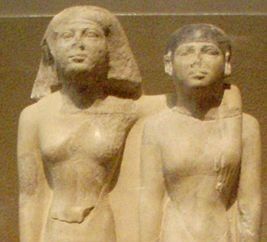Egypt to Reopen Pharaoh Tombs to Woo Tourists

In a bid to attract tourists frightened away by the revolution of 2011, Egypt's tourism industry will look to re-open various pharaoh tombs that have been buried for decades, like, for example, the tomb of Queen Meresankh III - located at Giza. The Queen's tomb is expected to open to tourists sometime later this year, The Washington Post reported.
"We want to give people a reason to come back, to give them something new," Ali Asfar, the director general of archaeology at the Giza plateau, said. The initiative, tourism officials hope, will see a boost in arrivals. There are plans to open a further five tombs, of Ancietn Egyptian high priests, along with that of Queen Meresankh III.
Queen Meresankh III was the granddaughter of the Egyptian pharaoh Khufu, the second pharaoh of the Fourth Dynasty. Historians believe she died of unknown causes and rather unexpectedly and was buried in a tomb originally planned for her mother. The structure was discovered by archeologist George Reisner in 1927 and Reisner later described it as the most decorated and colourful tomb he ever saw.
"Our eyes were first startled by the vivid colors of the reliefs and inscriptions around the northern part of this large chamber. None of us had ever seen anything like it," he wrote in the Bulletin of the Museum of Fine Arts, published in October of that year in Boston, describing the tomb's main chamber.
Research and excavations have now confirmed the tomb has various figures depicting the Queen's relationship with people believed to be members of her family, including her children and parents. Furthermore, several inscriptions suggest there is also a timeline of the Queen's history, with details of the date of her death and funeral.
"A very unusual, if not unique, feature of the tomb of Queen Meresankh is provided by two inscriptions, one on each side of the outer doorway, which give the date of the death of the queen and the date of her funeral," Reisner wrote. Interestingly, there is no mention, anywhere in the tomb, of the king to whom Meresankh was married.
© Copyright IBTimes 2025. All rights reserved.






















